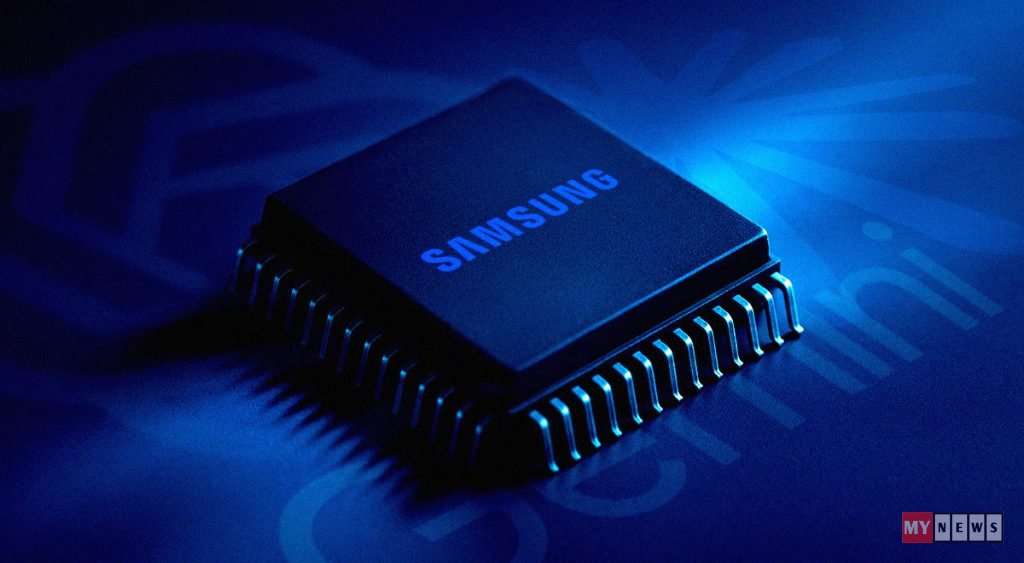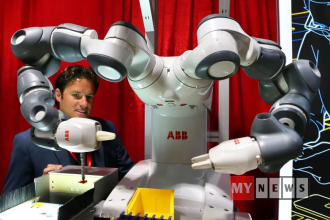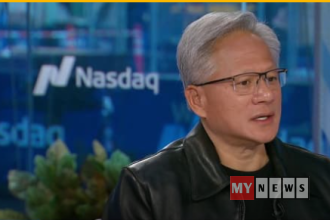Samsung Tiny AI Model is setting a new benchmark in artificial intelligence by proving that smaller can be smarter. Developed by Samsung SAIL Montréal researcher Alexia Jolicoeur-Martineau, the Tiny Recursive Model (TRM) has stunned the AI community by outperforming some of the world’s largest Large Language Models (LLMs), including Google’s Gemini 2.5 Pro — using just 7 million parameters.
At a time when leading AI companies like OpenAI, Google, and Anthropic are building trillion-parameter models, Samsung’s discovery disrupts the long-held belief that size equals intelligence. The finding shows that true innovation lies in architectural design and reasoning efficiency, not just computational power.

⚙️ Rethinking the “Bigger = Better” Myth
For years, the AI race has been dominated by scaling — more data, more parameters, more hardware. These massive LLMs can generate impressive human-like text but often fail at multi-step reasoning and logical consistency.
That’s where the Samsung Tiny AI Model breaks away. Despite its smaller size, it achieves state-of-the-art results on ARC-AGI reasoning tests, which evaluate intelligence similar to human problem-solving. The secret behind its success is its recursive reasoning ability, allowing it to self-correct errors — a skill even giant models struggle to master.
🔁 How the Tiny Recursive Model Thinks
Unlike traditional LLMs that predict one token after another, the Samsung Tiny AI Model uses thinking loops to refine its own output. Here’s how it works:
- It receives a problem and proposes an initial solution.
- Then it loops through a self-review process up to 16 times, identifying and fixing reasoning flaws.
- Each loop strengthens accuracy until a final, verified result emerges.
This recursive self-reflection mimics how humans solve puzzles — reviewing mistakes before finalizing an answer. In fact, Samsung found that a two-layer TRM beat a larger four-layer variant, proving that simplicity can outperform size when designed intelligently.
🔍 Simpler Design, Smarter Results
TRM’s architecture is a refined evolution of the Hierarchical Reasoning Model (HRM). While HRM relied on complex dual-network structures and mathematical convergence assumptions, TRM simplifies the process by directly backpropagating through the recursive reasoning steps.
This shift eliminated inefficiencies and improved training stability. The results are staggering:
| Benchmark | TRM Accuracy | Comparison Model | Accuracy |
|---|---|---|---|
| Sudoku-Extreme | 87.4 % | HRM | 56.5 % |
| Maze-Hard | 85.3 % | HRM | 74.5 % |
| ARC-AGI-1 | 44.6 % | HRM (27 M) | — |
| ARC-AGI-2 | 7.8 % | Gemini 2.5 Pro | 4.9 % |
With less than 0.01 % of the parameters of major LLMs, Samsung Tiny AI Model achieved superior reasoning accuracy, redefining how efficiency and intelligence can coexist.
🌍 Efficiency and Sustainability Combined
Beyond performance, the Samsung Tiny AI Model represents a sustainable leap forward. Training enormous LLMs requires immense energy and costly infrastructure, raising environmental concerns. TRM, in contrast, consumes only a fraction of the resources while matching — or surpassing — their reasoning ability.
This means smaller AI labs, universities, and startups can now participate in advanced AI research without billion-dollar budgets. It democratizes AI innovation, enabling sustainable progress and reducing carbon footprints associated with massive training clusters.
🚀 A Smarter Future for AI Research
The implications of Samsung’s research are profound. The company’s focus on recursive reasoning over brute-force scaling may spark a new wave of lightweight, high-IQ models. Instead of measuring intelligence by size, the industry might soon evaluate models by their efficiency, reasoning depth, and adaptability.
As Samsung continues to expand its AI research, its Tiny AI Model proves one crucial lesson: true intelligence is structural, not statistical. The TRM shows that the future of AI lies not in trillion-parameter behemoths but in compact, energy-efficient systems capable of thinking, learning, and self-correcting.
In short, Samsung Tiny AI Model doesn’t just challenge the giants — it redefines what it means to be intelligent in the age of artificial minds.
See also: Google’s new AI agent rewrites code to automate vulnerability fixes













